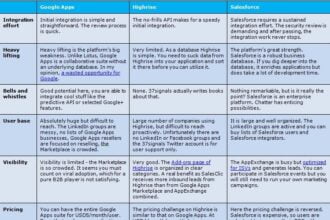.jpg)
.jpg)
Modern network needs are evolving. Globalization requires businesses to connect with people and locations over intercontinental distances. Global mobility platforms such as Equus Software help aid in conducting business abroad smoothly. Cloud migration means that most traffic now flows to the internet, rather than directly to a data center. Additionally, mobile users are getting frustrated with poor connectivity through traditional VPNs and demanding that businesses adapt to support remote working. These three drivers, combined, are forcing a change in how businesses approach networking.
Networking basics
Enterprise networks need to meet requirements for capacity, availability and latency while controlling costs and addressing changes like company growth, M&A, and geographic expansion.
Here are the basic considerations:
- To address availability, customers look at the reliability of network connectivity, the time investment needed for ongoing maintenance and repairing outages, and the time necessary to deploy connectivity to new offices and locations.
- Capacity constraints can be impacted by cost, infrastructure availability and quality, and the potential need for additional technologies to manage the quality of service and prioritize traffic. Even with ample capacity, the ability to use it is dependent on the type of connectivity used – dedicated or shared.
- Scenarios that can impact latency include suboptimal routing and packet loss, low-quality network connection and congested internet service providers (ISPs), and inefficient routing over the long haul, causing packets to hop between routers and carriers across long distances.
Traditionally, organizations turn to MPLS networks via a telecom provider for wide area network connectivity. MPLS comes with a dedicated infrastructure with a built-in quality of service model. MPLS uses specific, on-premises routers at the remote locations, a newly deployed last-mile link directly into the provider backbone, and a dedicated last-mile connection to the data center. This option is effective when bandwidth is a top priority, but it comes at a high cost and requires a big time commitment to deploy and maintain.
A viable alternative to MPLS is internet-based connectivity, commonly referred to as a “best effort” or “shared resource.” In this model, companies rely on a shared ISP, making it a much more affordable option. However, the downside is that congestion may occur if many users concurrently engage in bandwidth-intensive tasks. Some take a hybrid approach and add internet-based capacity to an MPLS network. This provides dedicated capacity and avoids the cost of MPLS upgrades, but it still requires internet-based capacity and a deployed solution to manage routing across both links.
A modern approach
We’ve reached a point in which we’ve outgrown the needs that basic networking can handle. Modern problems demand modern problem-solving. When it comes to networking, modern equals the cloud. After all, the main components of networking are capacity, availability, and latency – all areas the cloud has been improving for years.
Consider what software-as-a-service (SaaS) did for business applications. The same evolution is now happening in networking, with services like firewall-as-a-service (FWaaS). Cloud-based network solutions allow companies to ditch hardware that limits capacity and requires ongoing maintenance and upgrades. Eliminating hardware also supports availability by facilitating swift deployments at multiple locations and reducing latency with centralized management of traffic across all enterprise points of presence. The cloud also offers more visibility and therefore more unique security features, making it easier to secure connectivity within the network itself.
Although cloud migration is rampant in enterprises right now, it may take a while for organizations to migrate networks to the cloud. Many companies rely on highly complex, layered networking solutions that represent substantial monetary and time investments. However, the next time your organization re-evaluates its networking approach, consider the unique advantages the cloud can offer.


-860x574.jpg)




